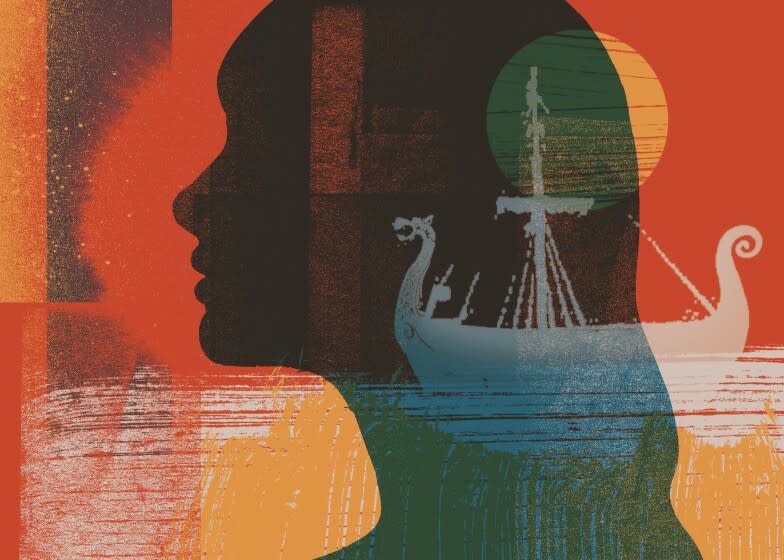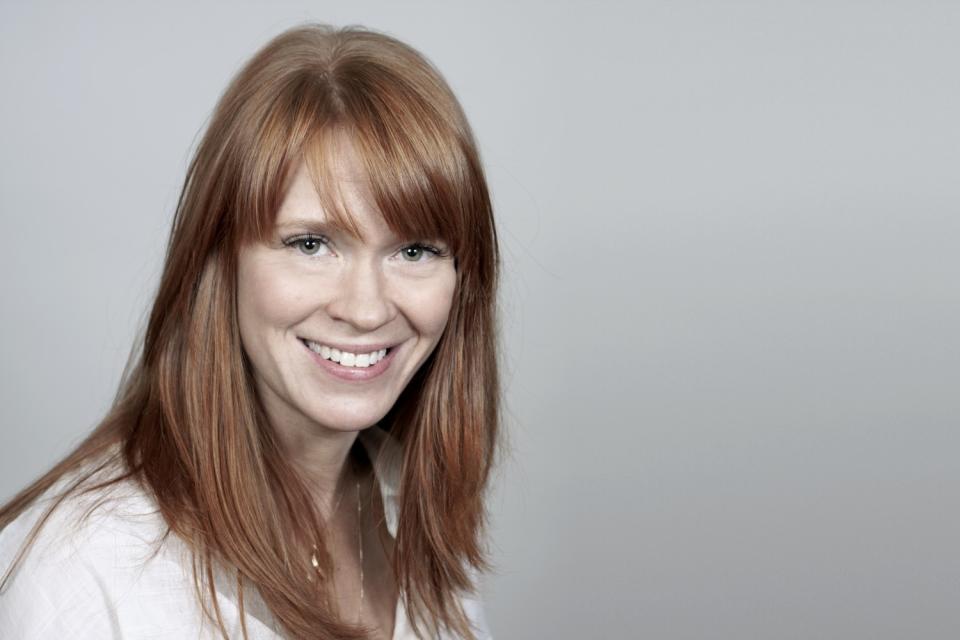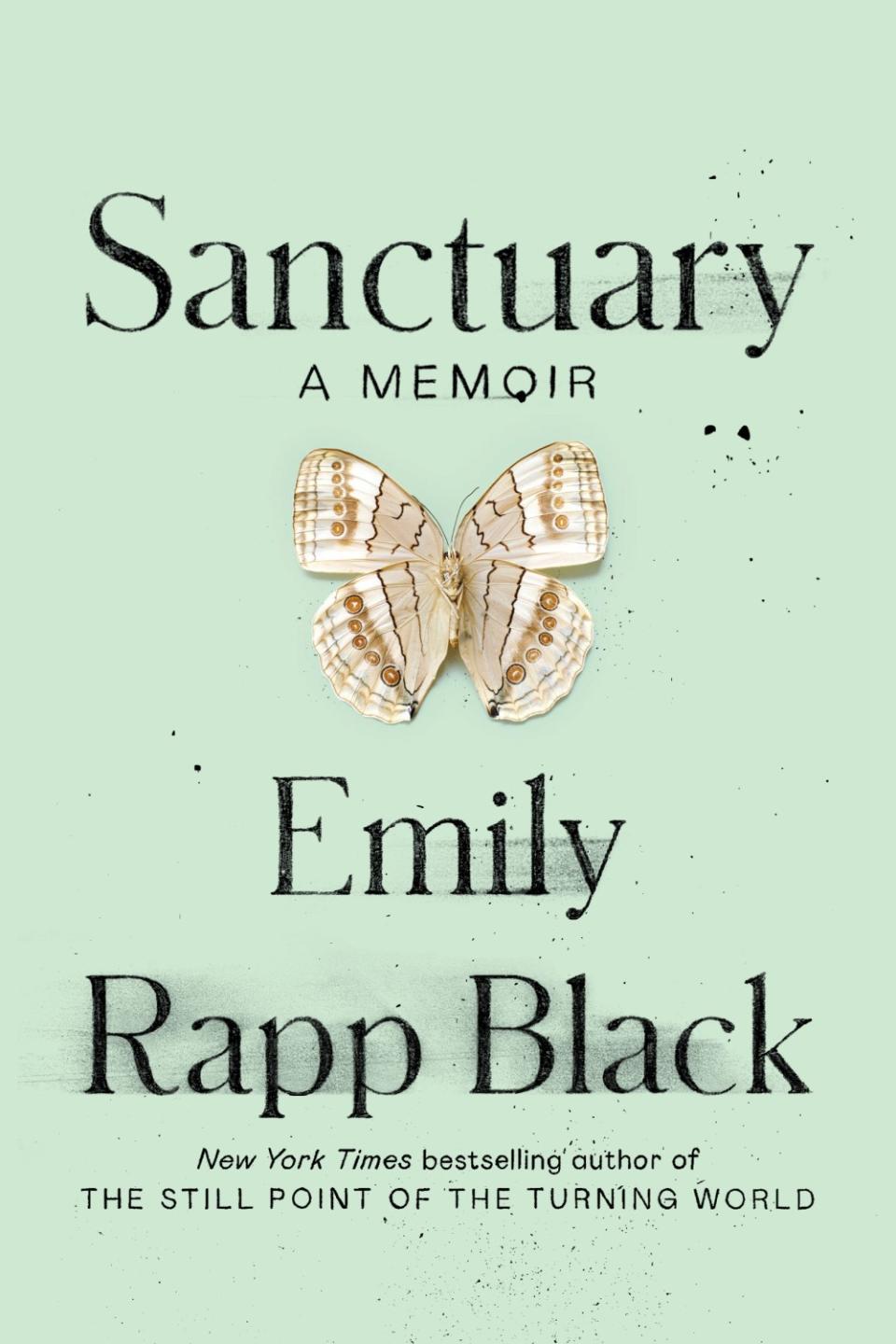A grieving mother's follow-up memoir asks: What now?

Consider the Phoenix, that majestic, born-again bird of myth that defies death by rising from its own ashes. A mighty creature; a symbol of hope.
“Screw that,” says memoirist Emily Rapp Black, imagining the bird’s ascension. “That bird looks like crap. That bird has one wing, one eye left, half of its beak, and it’s barely getting out of there.” In other words, that bird has been through hell, and it shows. But it’s ready to fly again, because that’s what it does.
Black and I are talking on the phone about resilience, grief and writing, three things about which we both have many thoughts and feelings. Black’s 2013 memoir, “The Still Point of the Turning World,” introduced us to Ronan, her infant son, who had been diagnosed with a rare terminal illness, Tay-Sachs disease, that destroys nerve cells in the brain and spinal cord. The diagnosis changed Black’s life forever. As she writes, “I had the sensation of skin falling away from bone. My life, the life as a new and hopeful mother, was over.”
But life, if you survive it, takes unexpected turns. And that thrashed Phoenix can still fly.
In her new book, “Sanctuary,” a lot happens. Ronan dies at just under 3 years old; Black’s marriage implodes under the strain of his illness. She meets a kind older man, Kent, and they have a daughter, Charlie, now “6 going on 16,” she says. They uproot their life in New Mexico and now live in a small town in Southern California’s Inland Empire.
None of which means life is all butterflies and rainbows. There are injuries from which one never heals, and losing a child has got to be near the top of that list. “The truth is that grief never lessens,” she writes, “it just moves around, and for me, and I think for many others, it moves around in a room that itself changes shape: a square, a well, a hole in a cracking wall, the corner of a sweltering attic, the aching belly of a hungry animal.”
Yet Rapp also wants readers to know unspeakable pain and newfound joy don’t necessarily alternate; often they run concurrently. “They can coexist,” she says, “and in fact they always do in some respect. You will be able to do it, whatever comes to you. You will find a way. Or you will give up. But you will probably find a way, because that’s what we’re wired to do.”

I can’t pretend these are just words to me. I remember shouting similar words roughly two years ago as I punched the walls of my bedroom: “My life is over!” And I meant it. My girlfriend Kate, the only person I ever loved, had just been diagnosed with a rare and terminal brain disease. I had just been laid off from my job of 23 years. I was headed for a full-on nervous breakdown. As Black puts it, “It’s kind of like a hole drops open in the world and in you go.” I liken it to a constant state of falling, as if my body had grown too heavy for the ground beneath (quite literally, as my depression eliminated all interest in exercise). Yet, as Black says, we’re wired to keep going.
This is why I’m still breathing.
When I tell Black about Kate, and her death in July, she unleashes a supportive torrent of swearing. “No,” she says. “That makes me mad.” This is how it often is among grievers. As the outside world looks on, not sure what to do or say; as friends you were sure would be around forever scatter to the winds, unwilling to come along for the ride — grievers share a bond. There is a sense that we’re all thrashing and gasping in the aftermath of the same shipwreck.
And if you happen to be a writer, you write. Black had already written one memoir, “Poster Child,” about what her childhood was like after she lost most of her left leg to a congenital defect. When Ronan was diagnosed, she began writing immediately. As in, the same day. “I was in this hyper-manic state,” she says, describing her overwhelming urge to write. There’s actually a name for the condition: hypergraphia.
“I was trying to carve some kind of frame or circle or weird, funky geometric shape around total chaos,” she says. “It was the thing that probably saved me from various ways of trying to take my own life.”
There’s a swagger to Black’s prose. From the new book: “I wasn’t brave for telling my story; I was simply doing the only thing I knew how to do, the only work I’ve ever loved. And I wasn’t doing it because I possessed some extraordinary courage, as if I were holding a glass ball inside my heart, protecting it, caring for it; I was doing it because it was necessary.”
I‘m a little envious. I could barely drool on myself after Kate’s diagnosis. Since her death I’ve chipped away at our story here and there, mostly in pieces like this one and op-ed columns about grief. I’d like to think there’s an epic of love, loss, grief and salvation locked inside me somewhere, but I might need tongs to pull it out. In the meantime, I’m pithy in my Facebook grief group.
“There’s no right or wrong way to do it,” Black says, reassuringly. “When you know it’s time, you will do it because you will not be able to stop yourself.”

In “Sanctuary,” Black describes an unpleasant encounter from her “Still Point” book tour, shortly after Ronan’s death. “You must have a cold heart,” a woman admonished her, “since you are able to talk about your son to all of these strangers without crying.”
To grieve is to be judged. “Lots of criticism,” she says, “and I think, partly, that’s gendered. A grieving woman, or a grieving mother, is supposed to be a particular way. The expectation is that I’m going to wail and pull my hair out. But if I did that, they’d call me crazy. There’s just no way to win.”
Yet grievers judge as well. Black’s ex-husband, dealing with his own grief, accused Black of making Ronan her “meal ticket.” The bereaved often scorn those former friends who wouldn’t, couldn’t or just didn’t stay with us. “Most people came forward and got in there with me,” Black says. “Some did not because it was too hard for them. And to those people I say, ‘Don’t email me again. Never call me. You don’t need to know me now.’”
I know the feeling. Grief means severing longtime ties from those who don’t know what to say and those who look upon our madness and find it prudent to scurry the other way. It’s a horrible feeling, to be abandoned at your lowest point. There’s a great, little-seen film about this phenomenon, “Everything Put Together” (2000), in which a suburban mother loses her newborn and finds herself abandoned by her friends. They seem to fear death and grief are contagious.
And like Black’s ex, grievers judge each other too. We’re not supposed to compare scars, but sometimes you can’t help it. I was once in a grief group with a guy who wanted to talk about his dead dog. I almost threw my chair at him. I’ve always loved my pets. But they’re not people. In the human realm, I can think of no more unnatural, monstrous loss than the death of a child. The death of a significant other carries its own kind of trauma: All of those private jokes, memories of falling in love, daily rituals that flow through the blood. No more.
“Every grief is different,” Black says. “But yes, I totally judge. I feel like when someone is 90 and they die, it’s not sad. They’re 90. They had a good, long run. People say, ‘They’re gone too soon.’ No. You were 90. Not gone too soon. Gone at a perfectly acceptable time.”
Then again, we’re currently in a prolonged season of grief, a pandemic with losses that are often minimized precisely because the victims tend to be elderly. It’s tempting, and dangerous, to think it can’t happen to us. “I think many people buy into this weird, quasi-religious — and in truth capitalist — notion that if you make enough money, work hard enough, and check all the boxes, then death will not find you,” Black says. “Nope. It will. Better stop avoiding this fact and start talking about how you want to die and how you want to live, which should include a good think about how we can comfort the living.”
And what of resilience, that ragged Phoenix? According to Black, it’s not what you think it is. It should not, she insists, be used as a synonym for strength. For “Sanctuary,” Black traced the word to Viking ships, built with wood not super-strong but highly adaptable. “Resilient” was used to describe, as she writes, “a material that could tolerate change without being destroyed,” chosen “to maximize strength and flexibility without adding weight. Depending on their region of origin, they chose pine and oak for the wood’s ability to adapt to changes in weather and water.”
Breakable wood. Flammable wood. The Viking ship, often used as a burial vessel, was “a mobile vessel symbolizing life and death.”
Or a sanctuary.
I think of the famous Ernest Hemingway quote from “A Farewell to Arms”: “The world breaks everyone and afterward many are strong at the broken places.”
Like those ships, we were built to break, but not to be destroyed.
Vognar is a freelance writer based in Houston.
This story originally appeared in Los Angeles Times.

